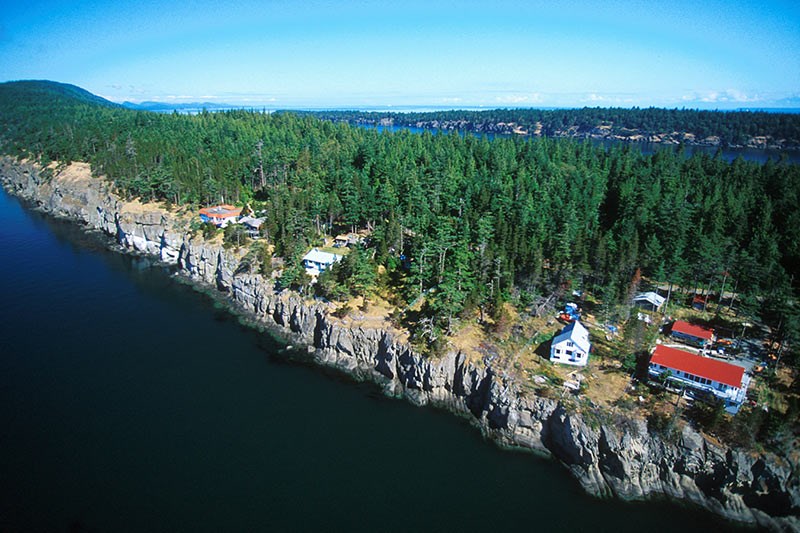More than 76 acres (31.2 hectares) on Saturna Island in B.C., home to endangered plant and animal species, is now protected after being acquired by a non-profit conservation group.
The Nature Trust of British Columbia purchased the land for $1 million, with funding from the federal government and private donors.
The land is on the southwest corner of Saturna and was purchased to protect the area’s biodiversity from development. Known as Mount Fisher Bluffs, it hosts a steep, grassy bluff and a rare Garry oak ecosystem, which provides habitat and food for at-risk species.
“It’s a remarkable bluff … it’s a really cool terrain feature with some amazing biodiversity on it,” said Jasper Lament, CEO of the Nature Trust, which has acquired about 180,000 acres (73,000 hectares) of ecologically significant land to protect wildlife, fish and plants.
The Bluffs area is home some rare plants and the rare barn swallow, an aerial insectivore, which flies around catching insects to eat while airborne, Lament said.
The Nature Trust was first approached by one of multiple owners of this parcel of land nearly a decade ago, who suggested it would be a good area to protect, Lament said.
“He talked about the peregrine falcons that nest on the Fisher Bluffs and the eagles that fly overhead, and the great blue herons, and how much he loved this land and how much he wanted to see it protected.”
This parcel is connected by a conservation corridor to a nearby plot of 143 acres (58.1 hectares) purchased by the Nature Trust last summer.
The Nature Trust will start creating a management plan to guide future stewardship of the land. The group continues talking with neighbours about other conservation opportunities on the Saturna, Lament said.
Saturna is an important place for conservation work because protecting grasslands and forests is a great nature-based solution for climate change, he said.
The ecosystems on the land include shallow-soiled grassland, herbaceous rocky bluffs, coniferous woodland, mixed woodland, wetland and mature coniferous forests with trees up to 250 years old.
“These habitats are important carbon sinks so protecting these lands is just critical … for protecting biodiversity, fighting climate change and keeping B.C. an amazing place to live,” Lament said.



